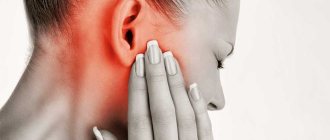Why does bad breath occur?
Halitosis, or bad breath, can occur 2-3 days after tooth extraction.
The stench can be described as follows:
- rotten;
- putrid;
- ammonia
An unpleasant odor is one of the signs that inflammation has begun in an empty tooth socket. As a rule, it is accompanied by pain and chills. What are the reasons for this condition? After removing a tooth, the dentist gives the patient valuable recommendations. By following them, you will be able to facilitate and speed up the healing process, as well as reduce the likelihood of complications. The tissues of the tooth socket become inflamed if the patient violates the following medical instructions :
- Drinks or eats anything within 2-3 hours after surgery. Because of this, a blood clot cannot form in the socket, which is designed to protect vulnerable tissues from infections and foreign bodies.
- During the day after the procedure, he consumes anything hot or cold - it does not matter whether it is food or drink.
- Within 24 hours after surgery, brush your teeth or rinse your mouth with an antiseptic.
- He does not brush his teeth for more than 2-3 days, which leads to the accumulation of bacteria and food debris in the oral cavity.
- It touches the socket, interfering with its healing and causing the destruction of the protective blood clot or epithelium.
In addition to hygiene errors, halitosis is caused by infectious diseases of the mouth . Pathogens that are already contained in unhealthy mucosa easily penetrate the open wound left in place of the tooth. In addition, sometimes a fragment of a tooth root remains in the hole, which does not allow the wound to heal. It also causes inflammation.
Problems with the oral cavity most often occur in patients with metabolic failure and weakened immunity.
It is important to consider that diabetes mellitus and other diseases associated with malfunction of internal organs can lead to halitosis . Bad habits such as alcoholism and smoking also cause bad breath.
We invite you to watch a video about the causes of bad breath:
Therapy methods
If removal provokes the symptoms described above, urgent professional help is required.
The dentist may prescribe surgical treatment that requires the application of medication to stop inflammation and heal the tissue.
If it is not possible to get qualified help, you can eliminate the bad odor from your mouth after wisdom tooth removal in the following ways:
- frequent cleaning of dental elements, use of floss;
- rinsing your mouth after eating. You can use purified warm water with lemon or mint essential oil;
- the unpleasant odor after removing the figure eight is easily eliminated with an alcohol-free mouthwash;
- cleaning the tongue from plaque;
- changing eating habits - in order for each tooth to be strong, it is recommended to include more nuts and dairy products in the diet.
We invite you to familiarize yourself with Removable dentures for one tooth: types and service life
Smell from the hole after extraction of the eight of wisdom
Most often, the mouth starts to smell bad after a wisdom tooth has been pulled out. This is explained by the fact that such teeth have a more complex and vulnerable root system than others. During inflammation of the wisdom tooth socket, patients, in addition to pain and chills, are haunted by an unpleasant aftertaste. In this case, bad breath is caused by the following reasons:
- Even a relatively weak pathogen that infects the oral microflora does not allow the formation of a protective blood clot. The hole remains an open wound, into which any infection easily penetrates.
- Some of the tissues of the oral cavity have already suffered from infection. Therefore, at the site of the extracted tooth, a cyst is formed - a benign tumor that separates the healthy mucosa from the affected one. The smell comes from the serous fluid that fills the cyst.
- During the operation to remove a tooth, hemorrhage occurred in the gum, causing a hematoma to form.
If pieces of dental consumables or a fragment of root remain in the socket from under a wisdom tooth, then inflammation and halitosis are inevitable.
Healthy response to wisdom tooth removal
First, let’s determine how our body normally reacts to such a serious intervention as the removal of the eighth molar. Most often, after extracting the remains of a tooth, due to the effects of the anesthetic, bleeding does not appear immediately, but after some time. Once the socket begins to bleed, it may take from several minutes to half an hour until this process is completed. If this does not happen, there is cause for concern. In this case, a corresponding clot is formed that has a protective function. After a couple of days, its color transforms from bright burgundy to much paler and even with a yellowish tint.
Why does it appear when baby teeth fall out?
Usually, children's baby teeth come out of their sockets on their own, without the help of a dentist . But you need to take your child to the doctor regardless of whether the disturbing tooth is still there. Otherwise, there is a high probability of inflammation and halitosis. This is due to the following reasons:
- Plaque and food particles accumulate in the socket of a fallen or loose tooth.
- The child places his hands and other foreign objects in his mouth.
- The elders do not monitor whether the baby brushes his teeth.
- Adults do not point out to the child the rules of hygiene that must be observed so that the wound from a lost tooth heals.
An unpleasant odor may appear if the child suffers from oral diseases - for example, stomatitis or caries.
Causes
The appearance of bad breath after dental surgery may indicate an infection or inflammation that affects the bone and periodontal tissues.
Most often, this condition is noted by patients 3-5 days after removal. If you do not seek medical help from a specialist in a timely manner, microbial plaque, redness, swelling and numbness begin to appear on the surface of the tissues. In addition, purulent contents may leak from the hole.
There are several reasons that provoke infection to enter the wound, resulting in an unpleasant odor.
Dry socket formation
Within two hours after the process is completed, a blood clot begins to form in the place of the former tooth. Its peculiarity is to protect fabrics from the penetration of microbes, food particles, pasta and other foreign substances.
On this topic
Find out if it hurts to have a wisdom tooth pulled out
- Maria Konstantinovna Tevs
- October 5, 2020
This formation is not subject to extraction. In some cases, it is washed out on its own, which leads to drying out of the wound.
This phenomenon can occur in patients who smoke, as well as in those who have poor blood clotting. Dryness of the socket leads to its rapid filling with saliva, pathogenic bacteria, and food. Against this background, pathologies begin to develop that contribute to the appearance of an unpleasant odor.
Failure to comply with hygiene rules
After wisdom tooth extraction, the specialist gives the patient certain recommendations for further wound care. This includes:
- gentle rinsing with antiseptic and healing solutions;
- a gentle cleaning process that avoids the injured area.
In addition, it is prohibited to use irrigators and dental floss near the wound. You should also not touch it with your hands, tongue or cotton pads. It is recommended to refrain from eating and drinking for at least three hours. You can only drink clean water.
Over the next three days, you must adhere to a certain diet:
- include foods that are soft and neutral in chemical composition in your diet;
- eat food only at room temperature;
- exclude too salty, spicy and sweet foods.
If you do not follow all the above recommendations, this may lead to irritation and bleeding of the hole. Under the influence of negative factors, it is possible that the blood clot, which protects the wound from the penetration of bacteria, is washed out. Such conditions contribute to the penetration and reproduction of pathogenic microflora in the hole.
Shard of a tool or tooth
In some cases, due to the negligence and inattention of the dentist, a small part of the dental tissue or damaged instrument may get into the hole during the removal process. This, in turn, provokes the development of a strong inflammatory process in the tissues, which is accompanied by:
- swelling of the wound;
- soreness;
- bleeding.
The consequence is also the appearance of a putrid odor from the oral cavity.
Dental pathologies
Against the background of inflammation occurring in the hole, certain complications may develop. Carious lesions of adjacent dental units cannot be excluded. Since a large number of pathogenic bacteria accumulate in the wound, they immediately begin to affect healthy areas, especially if their destruction is already observed (plaque, tartar, carious cavities).
Another cause of poor breathing is inflammatory processes occurring in the gum tissue and socket pockets (periodontitis, periodontitis). In rare cases, gingivitis and stomatitis may occur.
An inflamed wound, combined with a weakened immune system, can provoke a variety of pathological conditions in the oral cavity, each of which is accompanied by an unpleasant odor.
When should you see a doctor again after removal?
If after surgery the doctor has prescribed a follow-up appointment, you should not skip it. In addition, it is worth visiting the dental office again if you experience any kind of disturbing side effects.
Particularly urgent measures are needed when halitosis is accompanied by the following signs of complications :
- pain;
- swelling of the gums and face;
- bleeding;
- the appearance of pus;
- temperature.
If you waste time or ignore alarming symptoms, the problem will inevitably get worse.
Elimination of an unpleasant symptom
If the patient is unable to see a dentist in the next few days, he can try to eliminate the unpleasant odor from the mouth on his own. Measures allow you to stop the process of spreading pathogenic flora in the oral cavity. It is recommended to carry out hygienic rinses a little longer than usual - up to 7 minutes instead of the prescribed 3-4 minutes.
It is important to pay more attention to the interdental spaces, since it is in these areas that the majority of plaque accumulates. Along with paste and brush, it is recommended to use brushes, irrigators, and dental floss. Careful oral hygiene helps prevent the spread of infectious agents deep into the alveolar soft tissues.
Complications
Mild inflammation of the tooth socket, if not eliminated, takes on more severe forms. We are talking about purulent diseases such as alveolitis, abscess and periostitis. Patients should learn how to recognize and treat these postextraction complications.
Alveolitis
The walls of the wound remaining at the site of the extracted tooth become inflamed in 3% of patients . This condition is called alveolitis. It develops 3-5 days after surgery and is accompanied by a putrid stench. The complication is characterized by an acute course with destruction of the gum tissue that surrounds the wound.
This process is accompanied by severe, sometimes throbbing, pain in the empty socket. The more severely the tissue is damaged by alveolitis, the more severe the pain syndrome. Sometimes the pain affects the part of the face that is closest to the wound. In addition to pain at the site of inflammation, a person with alveolitis suffers from migraines.
The complication manifests itself as follows:
- The patient's general well-being worsens. Weakness occurs and fatigue increases. Body temperature remains at 37-38 degrees.
- The submandibular lymph nodes are enlarged.
- The patient's teeth become more sensitive to cold and hot foods.
- The patient's appetite is impaired. At the same time, the salivary glands work more actively than usual, and a bitter taste appears in the mouth.
- The patient's face swells. This occurs if the wound has expanded significantly, or secondary foci of inflammation have appeared on the oral mucosa.
Without proper sanitation, alveolitis develops into osteomyelitis, which causes rotting of the jaw bone.
To avoid this, proceed as follows:
- Contact a dentist who will clean the hole and wash out the purulent infiltrate using hydrogen peroxide or a nitrofural solution. The doctor will give the patient an anesthetic injection and prescribe several repeated rinses.
- Antiseptic lotions are applied to a clean wound. This is done up to 2-3 times a day, the tampons are kept for 30 minutes.
- If the patient suffers from concomitant ailments, or his immunity is weakened, then antibiotics are prescribed.
A complication noticed in a timely manner is treated within 4-5 days . After this, the hole may hurt for up to 3 weeks.
We invite you to watch a video about what alveolitis is:
Abscess
An abscess is the most common post-extraction complication, during which a whitish-reddish abscess appears at the site of the tooth socket. With this pathology, the patient experiences acute, throbbing pain. Inflammation is accompanied by halitosis and the following symptoms:
- sleep disturbance;
- appetite disorder;
- temperature up to 38 degrees;
- swelling of the face;
- a feeling of bitterness in the mouth;
- enlargement of the submandibular lymph nodes;
- increased sensitivity of dental crowns.
Once opened, the abscess becomes an open ulcer. Inflammation can spread to soft tissues and teeth that are located next to the lesion. In particularly advanced cases, the problem leads to osteomyelitis and requires surgical intervention.
How does sanitation of an abscess occur? The dentist drains the wound, removes pus and damaged tissue. The surgical area is treated with an antiseptic and numbed. If teeth are damaged, they are either removed or filled with new crowns. Wound healing requires washing, rinsing and physiotherapeutic procedures. For abscesses, antibiotics are prescribed . Typically these are the following drugs:
- Amoxicillin;
- Ampiox;
- Cefodox;
- Lincomycin.
The abscess is treated for about a week under the supervision of professionals.
Periostitis
Periostitis, or flux, is a bacterial inflammation of the periosteum - the connective tissue of the jaw. With this complication, bags of pus quickly form between the periosteum and jaw, which quickly spreads over nearby tissues.
In addition, flux can occur due to the degeneration of a benign cyst , which protects the healthy part of the mucosa from the inflamed one. A person with periostitis experiences pain that is aggravated by touching the source of the disease. The complication begins with swelling, which covers the gums and moves to the patient’s cheek. Later the swelling spreads to the following parts of the face:
- on the lips;
- on the chin;
- on the neck;
- on the lower eyelids.
With flux, the nasolabial fold swells and becomes numb . The patient's body temperature rises to 38 degrees. Purulent masses may come out through the gums. The pain in the lesion subsides after the abscess breaks through, but after a while it intensifies.
How is the disease treated? First of all, the dental surgeon determines the affected area and administers an anesthetic to the patient. It then proceeds as follows:
- Disinfects the part of the mucous membrane on which the operation will be performed.
- Incises the gum to release pus.
- Thoroughly drains foci of inflammation, removing pus and affected tissue.
- Fills those inflamed teeth that can still be saved.
The patient is prescribed analgesics and antibiotics, as well as physiotherapy - laser and ultrasound treatment. During the recovery period, you should not eat hard, spicy, sour or salty foods. The patient is advised to drink plenty of fluids. With timely and correct sanitation, the flux will disappear within a week .
We invite you to watch a video about what periostitis is:
Preventive measures
Smell after wisdom tooth removal is a fairly common occurrence if there is some kind of infection in a fresh wound. At the same time, it is definitely impossible to postpone a professional examination if a tooth fragment and a piece of any foreign object remain in the socket, or a protective blood clot was accidentally removed.
First aid
There are situations when it is not possible to get to a specialist in the near future, then everyone can help themselves on their own.
- Spend more time hygienically brushing your teeth, working on all areas. It is ideal if you start using floss to clean the interdental spaces;
- Rinse after meals. For this, ordinary purified water is suitable - always warm, adding a few drops of essential oil of mint and lemon is allowed;
- Use special anti-inflammatory rinses that do not contain alcohol. In the composition, pay attention to the content of mint and eucalyptus extracts;
- You can prepare a mouthwash yourself from decoctions of natural ingredients (oak bark, St. John's wort, lemon balm, chamomile, sage, eucalyptus, mint);
- Clean your tongue from plaque additionally with a special scraper;
- Change some eating habits - eat more nuts, fruits and vegetables. But meat, fish, various fast foods, confectionery, semi-finished products, milk, and fermented milk products should be excluded from the diet if possible.
The hole, which has become inflamed and therefore begins to smell, must be treated first. Solutions of chlorophyllipt, furatsilin or ordinary potassium permanganate will help with this - take a cotton swab and moisten it with the substance, the hole is carefully soaked in it. The main goal is to remove pus and dead tissue, that is, to remove the source of pathogenic microflora.
A solution of hydrogen peroxide also successfully copes with the task; a lotion with this substance must be applied for a couple of minutes. Lidocaine, Novocaine, and any cool compresses that will relieve inflammation and pain work well.
If you prevent unfavorable developments in time after the removal of a wisdom tooth, you can protect yourself from serious consequences. But it happens that the patient suffers pain for a long time and only drinks analgesics, neglecting the rules of hygiene and not seeing a doctor in time, purulent processes can make themselves known.
In order to protect yourself after the extraction procedure from the occurrence of infection in the formed hole, which provokes the taste of pus with a repulsive odor, over the next 24 hours it is strongly advised to spit less and not rinse the mouth (unless prescribed by the doctor). You should not consume hot foods, tea, coffee, and you should also refrain from smoking.
After the removal of a wisdom tooth, in the first day the socket may bleed a little, which will provoke a taste of iron in the mouth and a characteristic aroma (but not putrefactive, but rather a clay and steel smell).
We suggest you read: How to numb a tooth at home
You can take a sterile napkin, make a tourniquet out of it, which is applied to the wound and bitten. You need to keep the napkin in this position for 20 minutes. Under no circumstances should you attempt to remove a blood clot that has formed. It will precisely prevent infection from entering the hole, thereby speeding up the healing process.
If severe pain occurs after the procedure, you may take analgesic medications. But swelling of the soft tissue can be reduced with cold compresses. They are applied to the area of the cheek where the formed hole is located.
Also, severe swelling can be relieved by desensitizing drugs (Tavegil).
When sleeping at night, it is better to use an extra pillow so that your head is higher than usual. This will help increase blood flow. After tooth extraction on the same day, you should not brush the area located near the hole.
The diet during this period should consist of soft food, and all dishes should only be at room temperature. For several days, you can make mouth baths with a decoction of chamomile and soda. To do this, the solution is simply taken into the mouth and kept for several minutes on the side where there is a hole. There is no rinsing involved.
Treatment and prevention
To avoid halitosis and related complications, you need to know about preventive measures. One of them is rinsing. They are also used when a problem has already arisen, and it is impossible to urgently visit a doctor.
Rinse solutions
During the treatment and prevention of halitosis, special solutions are taken into the mouth and held over the wound for 2 minutes.
In this case, the following rules are observed:
- Avoid intense rinsing so as not to damage the mucous membranes and wash the protective clot out of the hole.
- The first procedure is carried out at least 48 hours after tooth extraction.
- There should be 7-8 hours between sessions.
The simplest antiseptics for rinsing are sold in pharmacies, these are 0.05% Chlorhexidine solution and 0.01% Miramistin solution. For the same purposes, you can dissolve 1 tablet of Furacilin, which relieves inflammation, in 100 ml of water.
In addition to these, the following natural remedies are used for rinsing:
- Chamomile decoction . To prepare it, 2 tablespoons of dry raw materials are kept in 400 ml of boiling water for 20-30 minutes.
- A collection prepared from equal parts of sage, chamomile, St. John's wort and oak bark . About 1 tablespoon of the collection is brewed with warm water and left for 30 minutes.
- Infusion of fresh golden mustache . To prepare it, mash a tablespoon of the plant until the juice releases, pour in 200 ml of boiling water, and then leave for 30 minutes.
- Infusion of oak bark . It is obtained by boiling 2 tablespoons of the product in 400 ml of water. The rinse is filtered and then left for half an hour.
- Eucalyptus decoction : 2 tablespoons of leaves, pour 400 ml of warm water, and wait for about half an hour.
Aloe, calendula and calamus root are also suitable for rinsing with halitosis.
Herbs
In parallel with medications for rotten breath after tooth extraction, the use of folk remedies is allowed, but this should be previously agreed with the doctor. You can effectively eliminate unpleasant odor from the mouth by:
- Decoction of oak bark and sage. To prepare the solution, take two tablespoons of plant material, pour 1 cup of boiling water, and cool. It is highly undesirable to use hot solutions to treat the mouth, since heat stimulates the activity of pathogenic flora.
- Fresh golden mustache leaves. The leaf of the plant should be crushed until the juice comes out, which is then diluted in equal parts with boiled water. This folk medicine should be used twice a day.
- Eucalyptus. This plant will not only freshen your breath, but also reduce the intensity and severity of inflammation.
We suggest you read: The gums around the wisdom tooth are inflamed and swollen: what to do if it hurts, symptoms of inflammation
If there is no result from home treatment within two days, it is important to immediately consult a dentist.
Is purulent smell from the mouth after tooth extraction dangerous?











